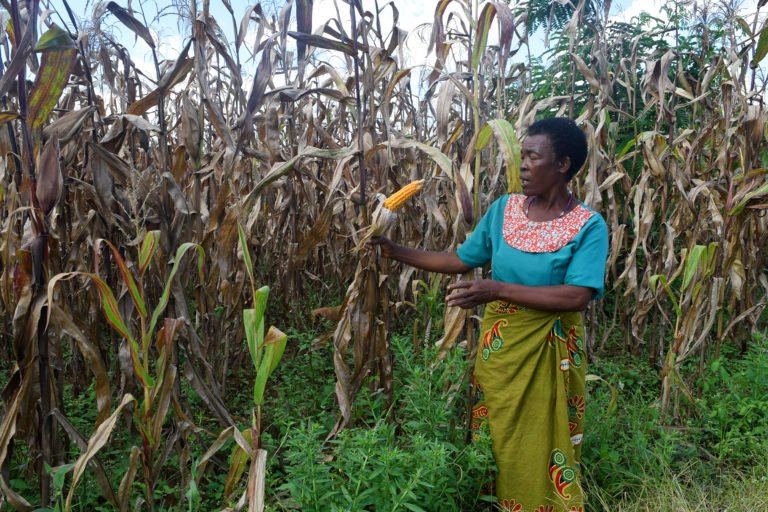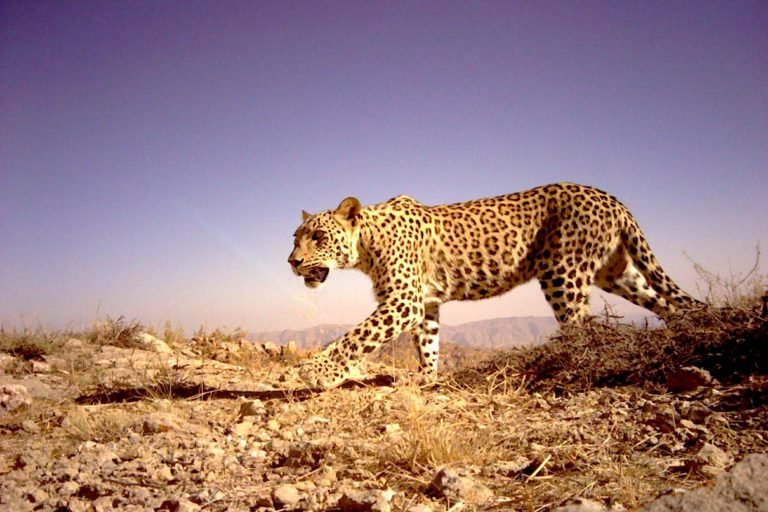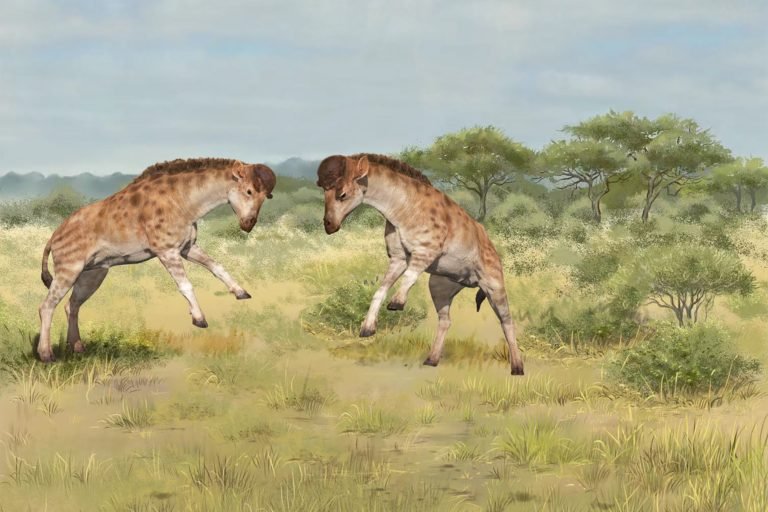- The discovery of the fossil of Discokeryx xiezhi, an ancient cousin of the present-day giraffes (Giraffa camelopardalis) that roamed the earth around 17 million years ago, suggests long necks win giraffe mating wars.
- Evolutionary biologists have long debated which of the two processes —natural selection or sexual selection—plays a more important role in the evolution of the ungulate’s long necks.
- The new paper does not definitely settle the debate but adds more weight to the idea that longer necks evolved, in part, due to sexual competition and not just as a means to feed on taller trees.
Scientists have puzzled over the distinctive form of giraffes at least since Charles Darwin and Jean-Baptiste Lamarck (figuratively) butted heads over how the towering ungulates got their long necks.
The Darwinian theory still prevails, but which of the two processes —natural selection or sexual selection—plays a more important role still divides evolutionary biologists. A new study led by scientists at the Chinese Academy of Sciences published in the journal Science adds weight to the sexual selection hypothesis.
The discovery of the fossil of Discokeryx xiezhi, an ancient cousin of present-day giraffes (Giraffa camelopardalis) that roamed the earth around 17 million years ago, suggests long necks win giraffe mating wars.
“Their simple message is that sexual selection played a big role in one of the ancestors of the present-day giraffe, and thus it opens the door for other members of this diverse lineage to show sexually selected necks and heads,” said Rob Simmons, a behavioral ecologist at the University of Cape Town in South Africa. Giraffes are found only in east and southern Africa.
Simmons, along with Lue Scheepers, put forward the sexual selection hypothesis back in 1996.
The leading explanation at that time was straightforward: long necks allow giraffes to feed on tall trees and outcompete other browsers. It improves the animal’s chances of survival, so the trait is passed on to future generations.
But, certain characteristics also make males more attractive to females and ensure greater reproductive success. In giraffes, the reasoning goes, longer necks were more efficient in fighting off sexual rivals, sometimes called the “necks-for-sex” hypothesis. Today, long necks may confer giraffes both kinds of advantages. The question that continues to intrigue evolutionary scientists is: what put the species on this path?
“Maybe the profound purpose for the long neck is to reach food at the higher levels, but the direct driving force of neck elongation in giraffes may be fighting because males fight using their long necks,” Shi-Qi Wang, the lead author of the new study, said.
The research is based on a detailed morphological examination of the fossilized remains of D. xiezhi found in northwest China and an analytical reconstruction of the environment in which it lived. These animals possessed a thick bony helmet that was used in vigorous head-to-head combats. In these ancient giraffe cousins, the necks and helmets evolved in response to sexual selection pressures, the study found.
Present-day giraffes have a bizarre fighting style. They stand alongside each other, seizing their opponent. It can start with jostling, but when things heat up, the bulls start swinging their horn-tipped heads into their challenger’s body. Longer necks are distinctly better at targeting a rival’s vulnerable body parts.
Some males have necks that stretch three meters long and heads that weigh up to 30 kgs (66 pounds). Wounds from such an attack can even prove fatal.
Field observations show that female giraffes prefer bulls with long necks, Simmons said. In giraffe groups, longer necks prop males up the social ladder, helping them achieve sexual dominance by cornering fertile females.
Not everybody is convinced of the newly-described fossil’s relevance to the evolution of the extant giraffe species. “It is a ruminant that fights with its head. This is not rare, and we have today several species that do this,” said Nikos Solounias, a professor of evolutionary biology at the New York Institute of Technology of D. xiezhi. “So to find a fossil that did this is really ordinary and not surprising.” Solounias noted that the newly-described D. xiezhi and giraffes have different fighting styles. He went on to question whether the “new animal is evolutionarily related to the giraffe.”
Others have wondered why females sport longer necks, too, if their original purpose was to make males more attractive to females. Peacocks for example, stand out for their extravagant coloration, yet peahens are drab by comparison. However, evolution is rarely straightforward, and some attributes that initially evolved for a sex-specific purpose can appear in both sexes. Simmons said one explanation is that the trait got pulled along in females through genetic correlation. “Male humans have nipples for the same reason,” he said.
The new paper does not settle the debate about giraffe necks but it makes it harder to overlook the role of sexual selection. “It is highly likely that both sexual and natural selection pressures have played a role in the evolution of the magnificent animal we see today,” Simmons said.
Citations:
Wang, S., Ye, J., Meng, J., Li, C., Costeur, L., Mennecart, B., … Deng, T. (2022). Sexual selection promotes giraffoid head-neck evolution and ecological adaptation. Science, 376(6597). doi:10.1126/science.abl8316
Simmons, R. E., & Altwegg, R. (2010). Necks�?for�?sex or competing browsers? A critique of ideas on the evolution of giraffe. Journal of Zoology, 282(1), 6-12. doi:10.1111/j.1469-7998.2010.00711.x
Simmons, R. E., & Scheepers, L. (1996). Winning by a neck: Sexual selection in the evolution of giraffe. The American Naturalist, 148(5), 771-786. doi:10.1086/285955
Mitchell, G., Van Sittert, S. J., & Skinner, J. D. (2009). Sexual selection is not the origin of long necks in giraffes. Journal of Zoology, 278(4), 281-286. doi:10.1111/j.1469-7998.2009.00573.x
(Banner Image: A rendition of D. xiezhi head-to-head butting. Image courtesy of Xiao Cong Guo and Yu Wang.)











![[Whitepaper] The Building Blocks of Digital Transformation: Seven Readiness Steps to Accelerate Industry 4.0 Success](../wp-content/uploads/2022/06/LCE007-BuildingBlocks_DigitalTransformation-900x600-1.png)
